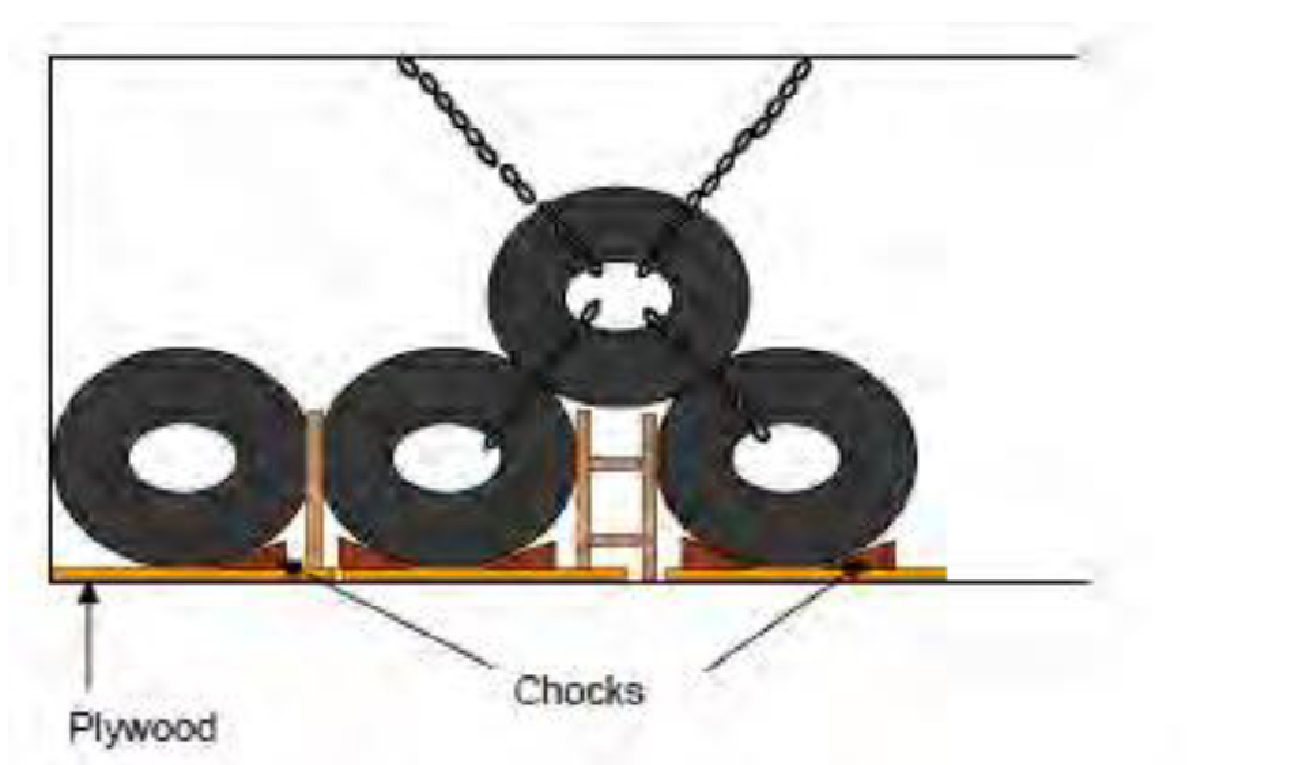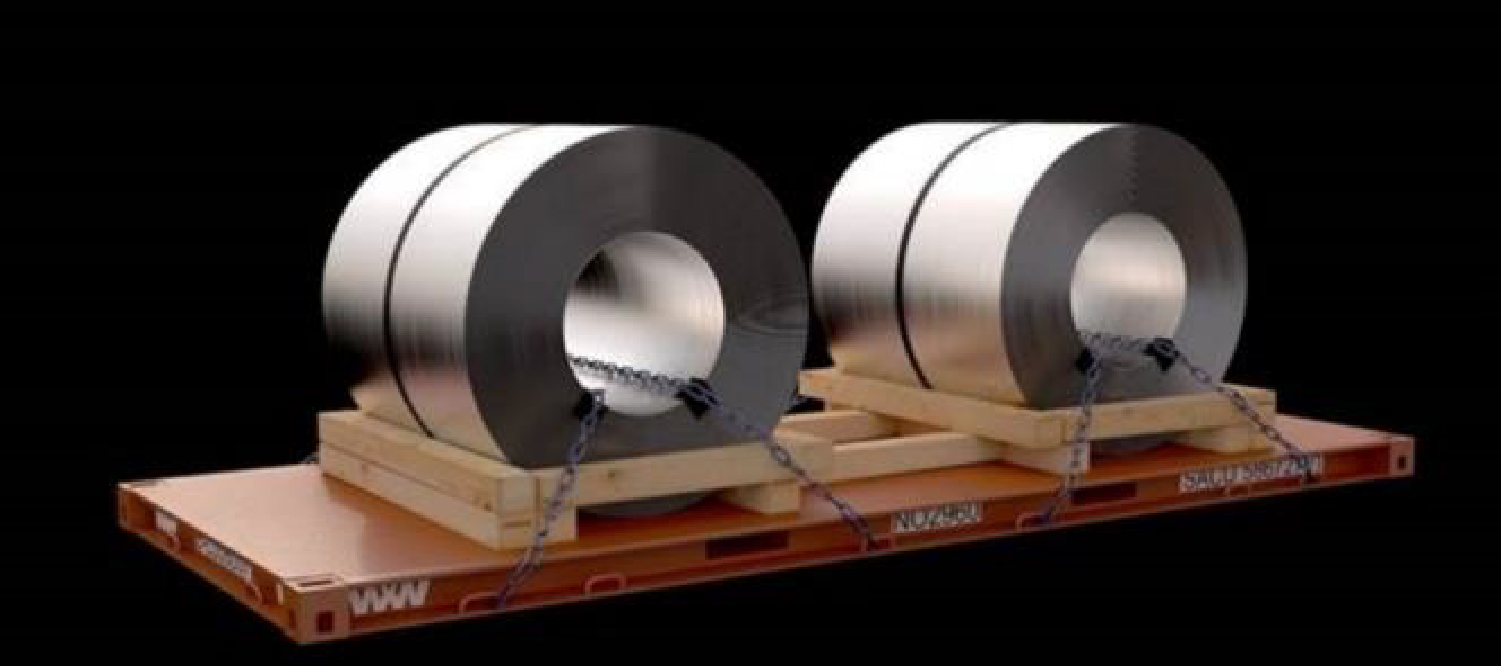Cargo Handling Instructions
18 April 2025
- Stevedores are supposed to provide special a forklift attachment (usually a rounded fork) for this commodity. OPERATORS require that this type of equipment be used if available. Stevedores in ports handling this commodity on a regular basis shall procure such equipment.
- Coils shall be properly secured on trailers, by wedges, timber and/or lashings.
- Plywood sheet should be placed on vessel decks before stowing this commodity
- Large steel coils shall never be stowed more than two high. Smaller coils can be loaded three high if so instructed by the OPERATORS representative and/or Vessel Master.
- Timber sticks shall be placed in angle between layers when loading more than one high.
- Stowage shall be such that steel coils cannot start rolling if vessel encounters heavy weather. This means that the coils shall preferably be stowed athwart ship across the hold from bulkhead to bulkhead. If this stowage is not possible, coils shall be stowed longitudinally with "rolling direction" fore and aft. If possible, coils should rest against bulkheads or other cargo strong enough to safely secure the coils.
- An effort should be made to stow the cargo as tightly as possible.
- All voids in stow, regardless how small, shall be choked/braced off by use of timber and/or wedges.


If a full row (from side to side) is loaded, the hold floor should be covered with dunnage, the outer coils of each row should be securely wedged. One option is to place a locking coil as the final coil of the lower layer, which should be located no lower than 1/3 of the coil diameter of adjacent coils.

If the width of the gap is such that the coil could sink lower than 1/3 of adjacent coil diameter, wooden dunnage should be used to narrow the gap.

..or a second locking coil should be inserted.

NOTE: LASHING FROM UNDERNEATH DECK ABOVE CARGO IS NOT ALLOWED IF ABOVE CARGO DECK IS LIFTABLE/ HOSTABLE DECK.